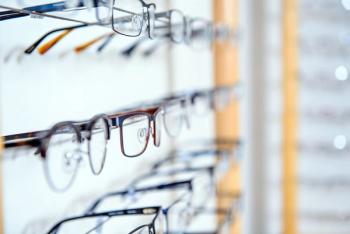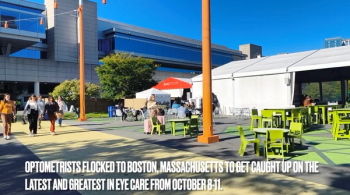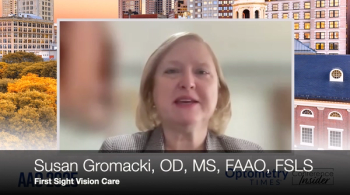
How sick building syndrome symptoms can mimic dry eye
SBS signs similar to dry eye
I am a city girl through and through. I spent my childhood growing up in New York City and currently reside in Brooklyn, NY.
The availability and convenience of public transportation at any hour of the day or night and the close proximity to just about anything I ever needed has left me devoid of one precious, coming-of-age tool of freedom-a driver’s license.
To further complicate things, I am a very sensitive car passenger who is easily cast into nausea by the motion of the vehicle. I must always sit in the front seat next to the driver.
Because of this, I had the good fortune to meet and learn about my hired driver Ray as he drove me to a lecture.
Previously from Dr. Mastrota:
The case of Ray
Ray is a 42-years-old male who owns the limousine company for which he drives. He is in excellent health and has been an avid surfer since his teenage years.
When I told Ray I was headed to lecture about dry eye, he said, “I used to have that.”
“Used to?” I asked. My interest immediately piqued by the past tense of the condition.
“How was your dry eye cured?” I asked.
“I quit my job,” Ray said.
Change in career answer to dry eye?
Formerly a member of the corporate office setting, Ray was not always a business owner-and certainly not always free to open the window for a breath of fresh air.
Ray’s past career had him trapped inside an office cubicle in the Big Apple. Had the change in his working environment along with the change in his career “cured” Ray of his dry eye?
Surely there are many other variables to consider, but for Ray, this move to a more out-of- office occupation freed him from his ocular discomfort allowing him to return to wearing contact lenses comfortably.
But maybe it wasn’t ever dry eye that was bothering Ray. Sure, it would be easy to accept it as fact and move on, but what if it was something else?
Could Ray have been suffering from sick building syndrome (SBS)?
Related:
SBS signs similar to dry eye
The term "sick building syndrome" is used to describe situations in which building occupants experience acute health and comfort effects that appear to be linked to time spent in a building, but no specific illness or cause can be identified.1
Symptoms of SBS include headache; dry cough; dry or itchy skin; dizziness and nausea; difficulty in concentrating; fatigue; sensitivity to odors, and, of specific interest, nose, throat, or eye irritation.
Symptoms of SBS are likely the result of a combination of factors. These factors may include:
• Chemical pollutants from indoor sources such as adhesives, carpeting, upholstery, manufactured wood products, copy machines, pesticides, and cleaning agents which may emit volatile organic compounds (VOCs)-including formaldehyde
• Ozone produced by printers and photocopiers
• Biological pollutants such as viruses, bacteria, dust mites, pollen, and toxic black mold
• Inadequate ventilation such as defective heating systems, malfunctioning ventilation, and air-conditioning systems.
• Psychological factors such as excessive work stress, poor staff morale, poor interpersonal relationships, poor communication, dissatisfaction, and other psychosocial factors
• Other factors such as poor or inappropriate lighting, fluorescent lighting, absence of sunlight, humidity, temperature, noise, bad office design, and poor ergonomics
Related:
What can be done to combat SBS
The U.S. Environmental Protection Agency recommends a number of measures to combat SBS.
Core workplace modifications include pollutant removal, increased ventilation rates, and air cleaning. High performance filters can be useful in purifying ambient air.
Phytoremediation is the use of plants to remove, metabolize, or degrade toxic environmental materials.
The October 2010 issue of HortScience, The American Society for Horticultural Science’s online publication, reviewed different species of houseplants which were considered viable phytoremediation candidates for homes and offices where volatile formaldehyde is a concern.2
Certain plants may be effective in removing formaldehyde from the atmosphere and vary in effectiveness of formaldehyde removal-depending on their species.
Perhaps we should nurture the gardener in us and prescribe a pretty philodendron when managing ocular surface complaints!
Related:
References
1. United States Environmental Protection Agency. Indoor Air Facts No. 4: Sick Building Syndrome. Air and Radiation (6609J). Research and Development (MD-56). February 1991.
2. Kwang JK, Myeong IJ, Lee DW, Song JS, Kim HD, Yoo EH, Jeong SJ, Han SW. Variation in Formaldehyde Removal Efficiency among Indoor Plant Species. HortScience 45(10): 1489-1495. 2010.
Newsletter
Want more insights like this? Subscribe to Optometry Times and get clinical pearls and practice tips delivered straight to your inbox.




















































.png)


